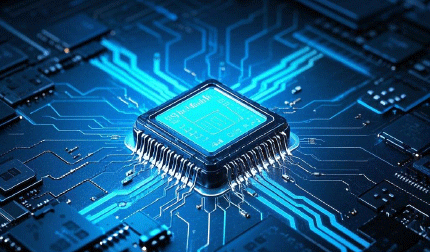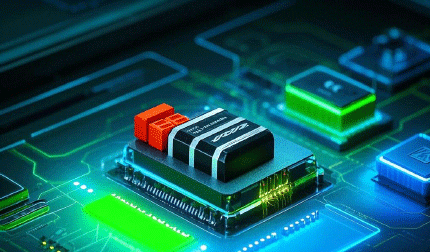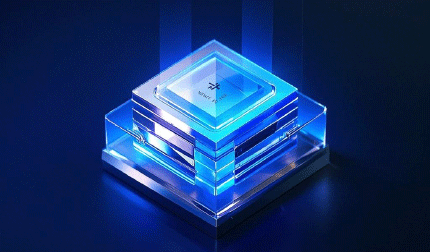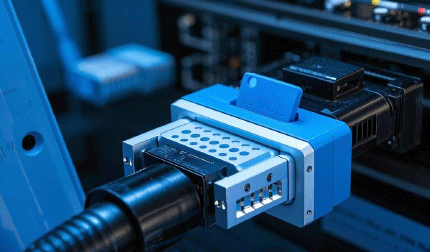Integrated Circuits: The Backbone of the Digital Age and Their Ever - Evolving Landscape
1/15/2025 5:52:09 PM
In the realm of modern technology, few inventions have had as profound and far - reaching an impact as integrated circuits (ICs). These tiny marvels of engineering, often no larger than a fingernail, are the building blocks upon which the entire digital world is constructed. From the smartphones that have become an extension of our daily lives to the supercomputers that power complex simulations and data analytics, integrated circuits are the unsung heroes driving the technological revolution.
1. A Brief History of Integrated Circuits
1.1 The Birth of the Integrated Circuit
The concept of the integrated circuit emerged in the late 1950s as a solution to the growing complexity and size of electronic devices. Prior to the development of ICs, electronic circuits were composed of discrete components such as transistors, resistors, capacitors, and diodes, which were individually soldered onto printed circuit boards. This approach was not only time - consuming and costly to manufacture but also limited the speed and reliability of electronic systems due to the long interconnecting wires between components, which could introduce signal interference and delays.
In 1958, Jack Kilby at Texas Instruments demonstrated the first working integrated circuit. His invention consisted of a germanium wafer on which he integrated multiple components, including a transistor, a capacitor, and resistors. This breakthrough eliminated the need for external wiring between discrete components, significantly reducing the size and power consumption of electronic circuits. Around the same time, Robert Noyce at Fairchild Semiconductor independently developed a similar concept, but with a more practical approach using silicon and a planar process, which became the standard for modern integrated circuit manufacturing.

1.2 The Moore's Law Era
In 1965, Gordon Moore, one of the co - founders of Intel, made a prediction that would shape the future of the semiconductor industry. He observed that the number of transistors on an integrated circuit was doubling approximately every two years, leading to exponential growth in computing power while simultaneously reducing costs. This prediction, known as Moore's Law, held true for several decades and became the driving force behind the rapid advancement of IC technology.
Over the years, the semiconductor industry has continuously pushed the boundaries of miniaturization, packing more and more transistors onto smaller and smaller chips. In the early days, ICs had only a few dozen transistors, but today, high - end microprocessors can contain billions of transistors. This relentless pursuit of miniaturization has led to the development of more powerful and energy - efficient electronic devices, from personal computers to mobile phones, enabling the digital revolution that we are currently experiencing.
2. The Anatomy of an Integrated Circuit
2.1 Components of an Integrated Circuit
An integrated circuit is a complex assembly of various electronic components fabricated on a single semiconductor substrate, typically made of silicon. The most fundamental components of an IC are transistors, which act as tiny switches that can control the flow of electrical current. Transistors are the building blocks of digital logic circuits, allowing for the processing and storage of information in the form of binary digits (0s and 1s).
In addition to transistors, ICs also contain other passive components such as resistors, capacitors, and inductors. Resistors are used to control the flow of current, capacitors store electrical charge, and inductors are used in applications that require the storage and release of magnetic energy. These passive components are essential for functions such as signal filtering, voltage regulation, and timing control within the IC.
2.2 The Manufacturing Process
The manufacturing process of an integrated circuit is a highly complex and precise operation that involves multiple steps. It begins with the growth of a high - purity silicon wafer, which serves as the base material for the IC. The wafer is then subjected to a series of photolithography steps, where patterns are transferred onto the wafer using light and a photosensitive material called photoresist.
During photolithography, a mask containing the circuit design is placed over the wafer, and ultraviolet light is shone through the mask. The exposed areas of the photoresist are then removed, leaving behind the desired pattern on the wafer. This pattern is used to define the location of transistors, interconnecting wires, and other components on the IC.
After photolithography, the wafer undergoes a series of etching and deposition processes to create the physical structure of the components. For example, in the case of transistors, layers of silicon dioxide and polysilicon are deposited and etched to form the gate, source, and drain regions of the transistor. The interconnecting wires that connect the components on the IC are also formed during this process, typically using metals such as aluminum or copper.
Once the components are fabricated, the wafer is tested to ensure that each IC on the wafer is functioning correctly. Defective ICs are marked and removed, and the remaining good ICs are then separated from the wafer through a process called dicing. The individual ICs are then packaged in a protective casing, which provides electrical connections to the outside world and protects the delicate components inside from physical damage and environmental factors.
3. Applications of Integrated Circuits
3.1 Consumer Electronics
Integrated circuits are the heart and soul of consumer electronics. In smartphones, for example, multiple ICs are used to perform various functions. The application processor, which is a type of IC, is responsible for running the operating system, applications, and handling tasks such as data processing, graphics rendering, and communication with other components. Memory ICs, such as random - access memory (RAM) and flash memory, are used to store data and programs temporarily and permanently, respectively.
In addition, there are specialized ICs for functions such as audio processing, camera control, and wireless communication. Bluetooth and Wi - Fi ICs enable wireless connectivity, allowing smartphones to connect to other devices and the internet. These ICs have made smartphones powerful, compact, and energy - efficient, enabling users to perform a wide range of tasks, from making calls and sending messages to playing high - definition games and streaming videos.
In other consumer electronics devices, such as tablets, laptops, smart TVs, and wearables, integrated circuits also play a crucial role. In laptops, the central processing unit (CPU) and the graphics processing unit (GPU) are two of the most important ICs. The CPU handles general - purpose computing tasks, while the GPU is responsible for rendering high - quality graphics, which is essential for gaming, video editing, and 3D modeling applications.
3.2 Automotive Industry
The automotive industry has also been revolutionized by integrated circuits. In modern vehicles, ICs are used in a wide range of applications, from engine control and transmission management to advanced driver - assistance systems (ADAS) and in - vehicle infotainment.
Engine control units (ECUs) are IC - based systems that monitor and control various aspects of the engine's operation, such as fuel injection, ignition timing, and air - fuel ratio. By precisely controlling these parameters, ECUs can improve engine performance, fuel efficiency, and reduce emissions. Transmission control units (TCUs) use ICs to manage the shifting of gears in automatic transmissions, ensuring smooth and efficient operation.
ADAS, which include features such as adaptive cruise control, lane - keeping assist, and automatic emergency braking, rely heavily on integrated circuits. These systems use sensors, such as cameras, radar, and lidar, to detect the vehicle's surroundings, and IC - based processors to analyze the data and make decisions. For example, a radar - based adaptive cruise control system uses an IC to process the radar signals and adjust the vehicle's speed to maintain a safe distance from the vehicle in front.
In - vehicle infotainment systems, which provide features such as navigation, music playback, and hands - free calling, also rely on ICs. These systems use application processors, audio and video codecs, and communication ICs to deliver a seamless and user - friendly experience to the driver and passengers.
3.3 Industrial Applications
In the industrial sector, integrated circuits are used in a variety of applications, including industrial automation, robotics, and power management. In industrial automation, programmable logic controllers (PLCs) are widely used to control industrial processes. PLCs are based on ICs and can be programmed to perform a wide range of control tasks, such as controlling the operation of motors, valves, and sensors.
In robotics, ICs are used in the control systems, sensors, and actuators. The control system, which is often based on a microcontroller or a digital signal processor (DSP), is responsible for processing the sensor data and sending commands to the actuators to control the movement of the robot. Sensors, such as position sensors, force sensors, and vision sensors, use ICs to convert physical signals into electrical signals that can be processed by the control system.
In power management applications, integrated circuits are used to design efficient power - supply systems. For example, switch - mode power supplies (SMPS) use ICs to control the switching of power transistors, which can convert a high - voltage input to a low - voltage output with high efficiency. These power - management ICs are essential for reducing power consumption and heat generation in industrial equipment, as well as in consumer electronics.
3.4 Healthcare and Medical Devices
The healthcare and medical device industry also benefits greatly from integrated circuits. In medical imaging devices, such as X - ray machines, magnetic resonance imaging (MRI) scanners, and computed tomography (CT) scanners, ICs are used to process and analyze the data obtained from the patient. These devices use specialized ICs, such as analog - to - digital converters (ADCs) and digital signal processors (DSPs), to convert the analog signals from the sensors into digital data that can be used to create detailed images of the patient's internal organs.
In patient monitoring devices, such as electrocardiogram (ECG) machines, blood pressure monitors, and glucose meters, ICs are used to measure and analyze physiological parameters. These devices use sensors to detect the relevant physiological signals, and ICs to process the data, display the results, and in some cases, transmit the data wirelessly to a healthcare provider.
In addition, integrated circuits are also used in implantable medical devices, such as pacemakers and cochlear implants. These devices require highly reliable and energy - efficient ICs to ensure long - term operation and patient safety. For example, a pacemaker uses an IC - based control system to monitor the heart's rhythm and deliver electrical impulses when necessary to regulate the heart rate.
4. Technological Advancements in Integrated Circuits
4.1 Miniaturization and Nanotechnology
One of the most significant technological advancements in integrated circuits has been the continuous miniaturization of components. As the size of transistors and other components on an IC decreases, more components can be packed onto a single chip, leading to increased performance and reduced power consumption. This trend has been made possible by the development of nanotechnology, which allows for the precise manipulation of materials at the nanoscale level.
Today, the smallest feature sizes on commercial integrated circuits are in the nanometer range. For example, some of the most advanced semiconductor manufacturing processes can achieve feature sizes as small as 5 nanometers or even smaller. At this scale, the behavior of electrons and other physical phenomena change, requiring new materials and manufacturing techniques to ensure the reliable operation of the components.
4.2 3D Integration
Another important advancement in IC technology is 3D integration. In traditional 2D integrated circuits, components are fabricated on a single plane, which limits the density of components that can be integrated. 3D integration, on the other hand, allows for the stacking of multiple layers of ICs or components on top of each other, creating a three - dimensional structure.
There are two main approaches to 3D integration: through - silicon vias (TSVs) and wafer - level packaging (WLP). TSVs are vertical interconnects that pass through the silicon substrate, allowing for electrical connections between different layers of ICs. WLP involves packaging the ICs at the wafer level, which can reduce the size and cost of the final product. 3D integration enables higher levels of integration, faster communication between components, and improved performance, especially in applications such as high - performance computing and mobile devices.
4.3 Heterogeneous Integration
Heterogeneous integration is an emerging trend in IC technology that involves the integration of different types of components, such as logic, memory, and analog components, on a single chip or package. This approach allows for the combination of the best - in - class technologies from different domains, enabling the development of more powerful and versatile ICs.
For example, in some high - performance computing applications, heterogeneous integration is used to combine a high - speed logic processor with a large amount of memory on a single package. This can reduce the communication latency between the processor and the memory, leading to significant performance improvements. In addition, heterogeneous integration can also be used to integrate analog and digital components, which is important for applications such as sensor interfaces and wireless communication.
4.4 New Materials and Devices
The development of new materials and devices is also driving the advancement of integrated circuit technology. For example, the use of wide - bandgap semiconductors, such as gallium nitride (GaN) and silicon carbide (SiC), is becoming more widespread in power - electronics applications. These materials offer higher breakdown voltages, higher electron mobility, and better thermal conductivity compared to traditional silicon, allowing for the development of more efficient and compact power - management ICs.
In addition, there is ongoing research into the development of new types of transistors, such as carbon nanotube transistors and graphene - based transistors. These new devices have the potential to offer significant performance improvements over traditional silicon transistors, including higher speed, lower power consumption, and better scalability. However, there are still many technical challenges to overcome before these new devices can be widely adopted in commercial integrated circuits.
5. Challenges Facing the Integrated Circuit Industry
5.1 Technical Challenges
Despite the many advancements in IC technology, the industry still faces several technical challenges. One of the main challenges is the continued miniaturization of components. As the feature sizes of transistors and other components approach the atomic scale, quantum effects start to become significant, which can cause issues such as leakage current, variability in device performance, and reliability problems.
Another technical challenge is the development of new manufacturing processes and equipment to support the next - generation of ICs. The current semiconductor manufacturing processes are highly complex and expensive, and as the industry moves towards smaller feature sizes and new technologies, such as 3D integration and heterogeneous integration, new manufacturing techniques and equipment need to be developed. This requires significant investment in research and development and collaboration between semiconductor manufacturers, equipment suppliers, and research institutions.
5.2 Environmental and Sustainability Concerns
The integrated circuit industry also faces environmental and sustainability concerns. The manufacturing process of ICs is energy - intensive and requires the use of a large amount of water and chemicals. In addition, the disposal of electronic waste, which contains a significant amount of integrated circuits, is a growing problem. As the demand for electronic devices continues to increase, the environmental impact of the IC industry needs to be addressed.
To address these concerns, the industry is focusing on developing more energy - efficient manufacturing processes, reducing the use of hazardous chemicals, and improving the recycling and disposal of electronic waste. For example, some semiconductor manufacturers are using renewable energy sources to power their manufacturing facilities, and research is being conducted on developing new materials and manufacturing techniques that are more environmentally friendly.
5.3 Global Supply Chain Disruptions
The global supply chain of the integrated circuit industry has become increasingly complex and vulnerable to disruptions. The COVID - 19 pandemic, for example, highlighted the fragility of the supply chain, causing shortages of ICs in various industries. The industry is highly concentrated, with a few major manufacturers dominating the market, and disruptions in any part of the supply chain, such as raw material shortages, manufacturing capacity constraints, or transportation disruptions, can have a significant impact on the availability of ICs.
To mitigate the risks of supply chain disruptions, the industry is exploring strategies such as diversifying the supply chain, increasing local manufacturing capacity, and improving inventory management. In addition, governments around the world are also taking steps to support the development of the domestic semiconductor industry to reduce their dependence on foreign suppliers.
6. The Future of Integrated Circuits
6.1 The Internet of Things (IoT) and Edge Computing
The future of integrated circuits is closely tied to the development of the Internet of Things (IoT) and edge computing. In the IoT, billions of devices, from smart home appliances to industrial sensors, are connected to the internet, generating a massive amount of data. To process this data in real - time and reduce the need for data transfer to the cloud, edge computing is becoming increasingly important.
Integrated circuits will play a crucial role in enabling edge computing. Low - power, high - performance ICs will be required to process the data locally at the edge devices, while also ensuring reliable communication with the cloud. In addition, the development of specialized ICs for IoT applications, such as sensors, actuators, and wireless communication modules, will be essential for the growth of the IoT ecosystem.
6.2 Artificial Intelligence and Machine Learning
Artificial intelligence (AI) and machine learning (ML) are also driving the development of new types of integrated circuits. AI and ML applications, such as natural language processing, computer vision, and autonomous driving, require massive amounts of computing power to process large datasets and perform complex algorithms.
To meet these demands, specialized AI - optimized integrated circuits, such as neural network processing units (NPUs) and tensor processing units (TPUs), are being developed. These ICs are designed to accelerate the performance of AI algorithms, offering higher throughput and lower power consumption compared to traditional general - purpose processors. In the future, we can expect to see further advancements in AI - related integrated circuit technology, enabling more intelligent and autonomous systems.
6.3 Quantum Computing
Quantum computing is an emerging field that has the potential to revolutionize computing as we know it. Quantum computers use quantum bits, or qubits, which can exist in multiple states simultaneously, to perform complex calculations at speeds far beyond what is possible with classical computers.
Integrated circuit technology will also play a role in the development of quantum computers. Researchers are exploring the use of superconducting circuits, semiconductor - based qubits, and other technologies to develop scalable and reliable quantum computing systems. While quantum computing is still in its early stages, the development of integrated - circuit - based quantum components could lead to significant breakthroughs in the future.
In conclusion, integrated circuits are the cornerstone of modern technology, enabling the development of a wide range of electronic devices and applications. The industry has come a long way since the invention of the first integrated circuit, and with continued technological advancements, integrated circuits will continue to drive innovation and shape the future of technology in the years to come. However, the industry also faces several challenges, including technical, environmental, and supply - chain - related




